Detoxing in the “Romance of the Three Kingdoms” | by Cleveland Museum of Art | CMA Thinker | Apr, 2022
5 min read
A Shut Reading of a Japanese Portray
By Sinéad Vilbar, CMA Curator of Japanese Artwork
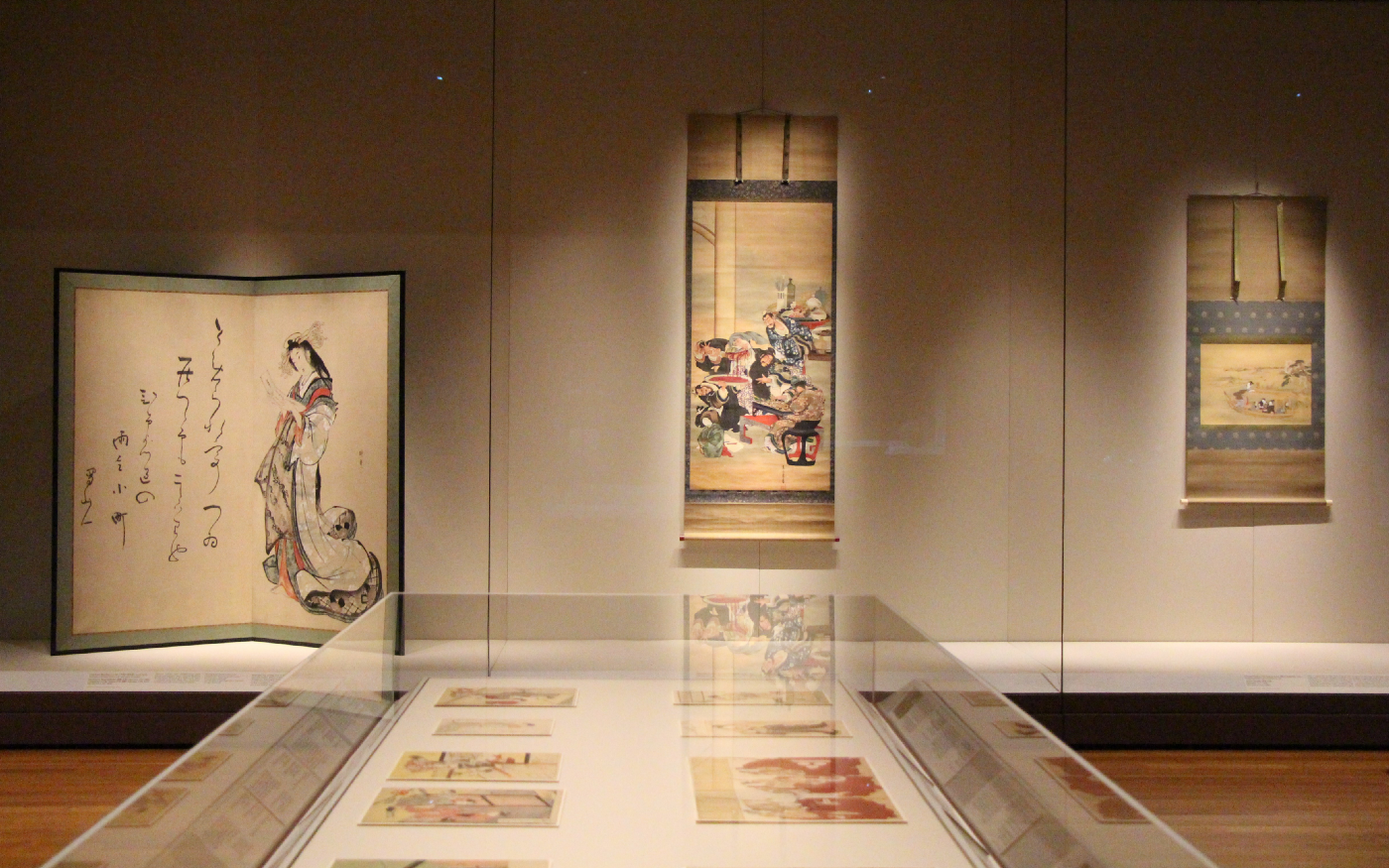
Literature was a main component of enjoyment in Japan’s Edo interval (1615–1868). In the new rotation of the CMA’s Japanese art galleries, several of the functions relate to poetry, novels, and theatrical performances. Literature offered persons with a typical lifestyle for discussions that could be held whilst socializing, as very well as a little something to do on their own. Let us choose a nearer search at Katsushika Ōi’s painting that depicts a scene from Romance of the Three Kingdoms, just one of the most well-known novels in East Asia, which had lately been published in an illustrated version made by the studio with which Ōi was affiliated. This Chinese novel is filled with sensational romances and violence, staples of well known entertainment, now as then.

Katsushika Ōi (c. 1800–after 1857), whose name in every day daily life was Eijo, was between the most talented of the pupils of celebrity artist Katsushika Hokusai (1760–1849). She was also just one of his daughters. Her premier known composition is in the collection of the Cleveland Museum of Art and depicts a scene from Romance of the A few Kingdoms.
The guy at the middle of Ōi’s painting is Guan Yu (died Ad 220), whose arm aches on rainy times due to an aged wound from an arrow. The knife-wielding, bespectacled medical doctor powering him is Hua Tuo (c. Advert 140–208), who has endorsed Guan Yu that as the arrow was poisoned, the contaminants have seeped into his bone. He thus cuts Guan Yu’s arm open up to the bone, and scrapes absent the contaminated portion, earning a awful grating audio. Whilst others cringe, Guan Yu drinks, eats, jokes, and — emphasised in this image — performs Go, displaying no indicator of suffering as his blood flows forth. At the time the surgeon has eradicated the contaminated region, and medicated and certain his arm, Guan Yu praises his excellent do the job, and declares his arm as excellent as new.
Romance of the 3 Kingdoms focuses on occasions that took spot around some hundred several years, commencing during the demise of the Han dynasty (202 BC–AD 220) and concluding with the reunification of a wide territory below the Western Jin dynasty (266–316) in 280. The novel attracts upon a selection of resources and is customarily attributed to Luo Guanzhong (c. 1300–c. 1400), whose biography, everyday living dates, and authorship of the text continue being below debate. Whilst the fourteenth-century relationship of the novel may be uncertain, the first printed version appeared in 1522.
The 1591 edition entered Japan via the port town of Nagasaki in the early 1600s. It subsequently turned exceptionally well-known by way of a translation by Kōnan Bunzan posted in Kyoto from 1689 to 1692 with the title Well-liked Romance of the Three Kingdoms. The title Kōnan Bunzan was just a pen identify and implies something alongside the traces of “Mountain of Text from Jiangnan.” It was translated, in reality, by a pair of Zen Buddhist monks from the Kyoto temple Tenryūji.
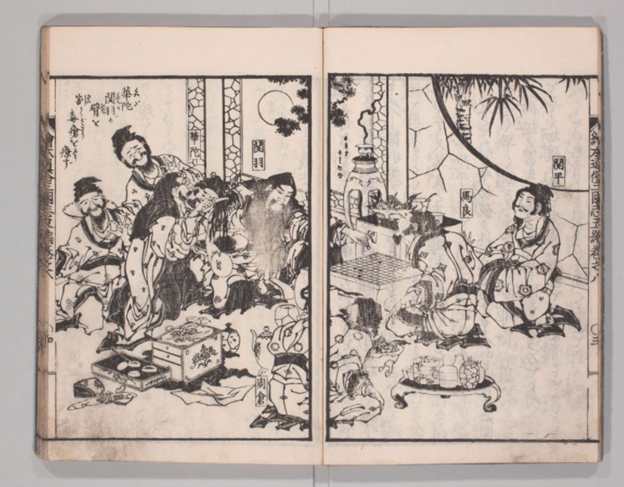
About some 150 yrs later on, an illustrated edition of Well known Romance of the Three Kingdoms came out in installments from 1836 to 1841. Called Picture E-book Well-liked Romance of the A few Kingdoms, the woodblock-printed illustrations are believed to have been created by Hokusai’s pupil Katsushika Taito II (dates unknown). Adept at both exteriors and interiors, as well as motion scenes and extra contemplative episodes, Taito also did not maintain back again when it arrived to gruesomely depicted decapitations and floggings. His horizontal composition of the bone scraping scene is a spectacular distribute — it operates across two struggling with web pages. He is restricted to black ink, however, so regardless of the cascading blood, significantly of the stress is conveyed by means of the many figures observing the procedure.
In contrast, Ōi’s vertical composition is finished on silk and makes use of vivid coloration. She normally takes specific care to show Guan Yu’s veins pulsing blue beneath his skin, and the glistening meat of his muscular tissues exactly where the health care provider has slice deep. She captures the elaborate composition of the sinews. A silk tourniquet is revealed tied higher than the incision site. The bowl into which the blood falls in Taito’s design and style is smaller sized, and considerably obscured by Guan Yu’s hand. In Ōi’s painting, the bowl is massive, and certainly brimming with blood. Whilst Taito’s version presents emphasis to the physician’s applications, showing in the foreground, Ōi minimizes lots of particulars of the setting to maintain our target on the operation.
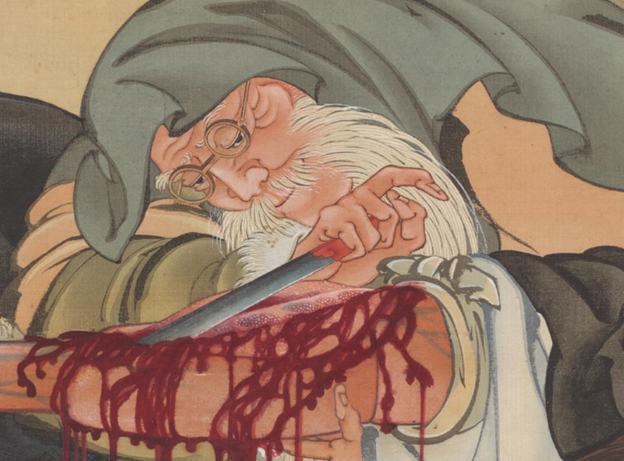
Taito exhibits the instruments in an elaborate box with drawers for distinct implements, but Ōi exploits the likely of coloration to demonstrate just a few blades laid out on wrapping paper or silk, with the relaxation of the doctor’s package in a huge, brocaded silk bag fixed with a pink woven silk twine with large tassels at the ends.
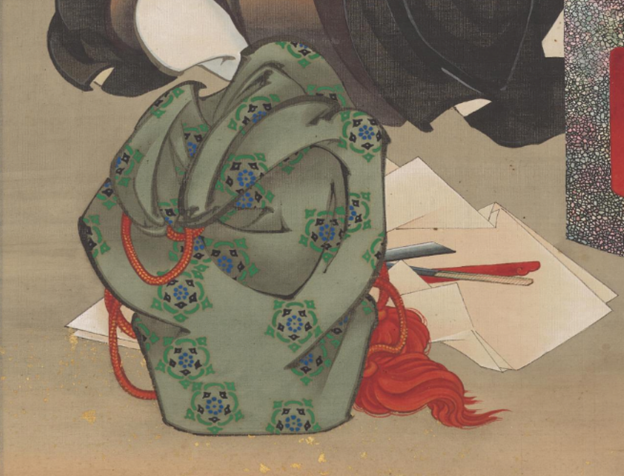
Ōi also treats the garments in her image with thorough interest. She would make use of shade, and this time, gold, to amplify the symbolism of Guan Yu’s toughness. As his suitable arm is treated by the physician, he stretches his still left arm forward, keeping a white game piece involving his fingertips. The pose ensures we get a distinct check out of the dragon motif on his robe, mirroring his possess fierce, identified gaze.
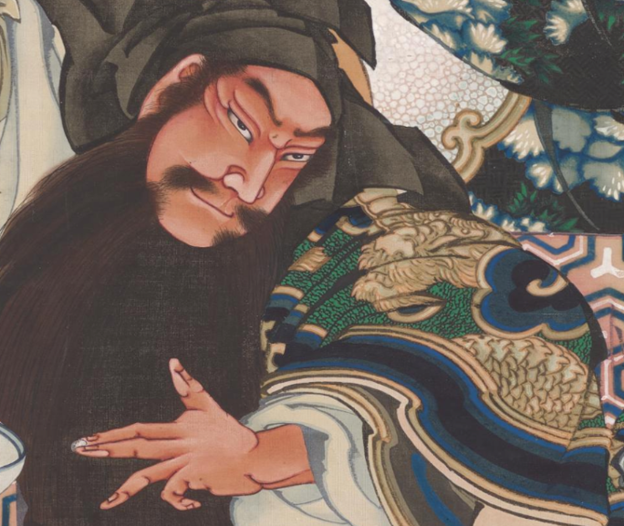
View Ōi’s painting in gallery 235A for the duration of your following pay a visit to in the not too long ago opened rotation, Japan’s Floating World, by Sunday, Oct 2, 2022. Comprising hanging scroll paintings, a display screen portray, woodblock and monitor-prints, as well as will work in lacquer, the present of 30 operates of art about two rotations is made up of highlights from the Kelvin Smith Collection as effectively as people acquired through the Kelvin Smith Fund that are seldom exhibited owing to their gentle sensitivity, and not long ago even less so because of to their inclusion in global touring exhibitions. Also on check out are woodblock prints from the 1930 bequest of Edward L. Whittemore. The initially rotation operates right until July 10, and the 2nd from July 12 by way of Oct 2, 2022.


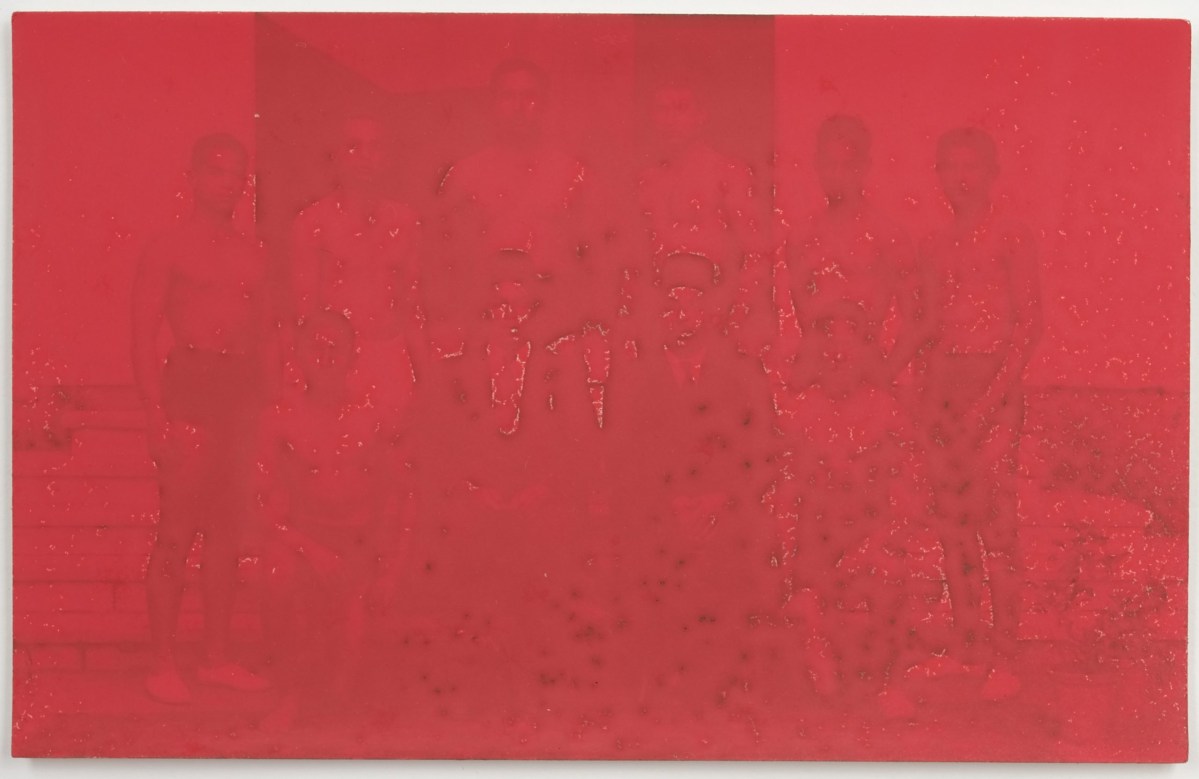
-quality(70)/cloudfront-us-east-1.images.arcpublishing.com/adn/SPZYIVTQKVBCVLIKOYXM53QQEE.jpg)